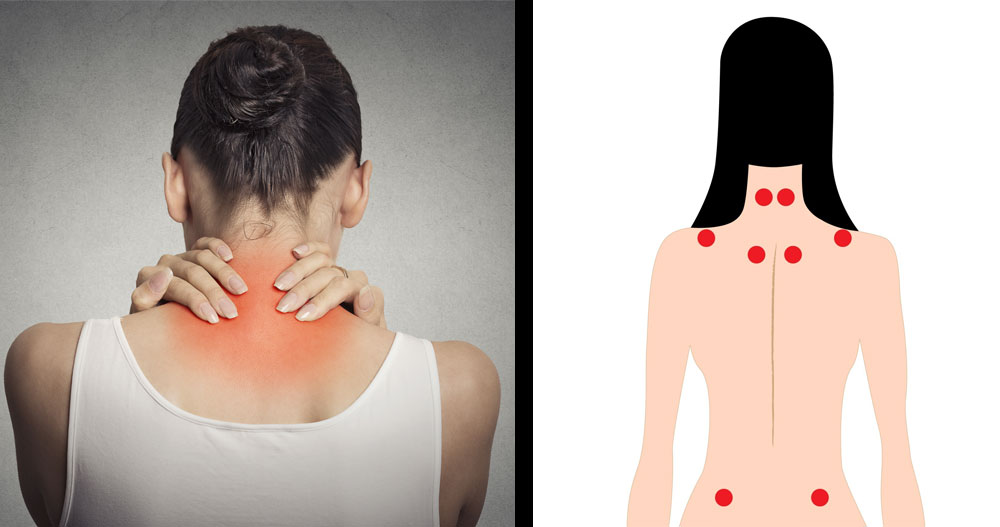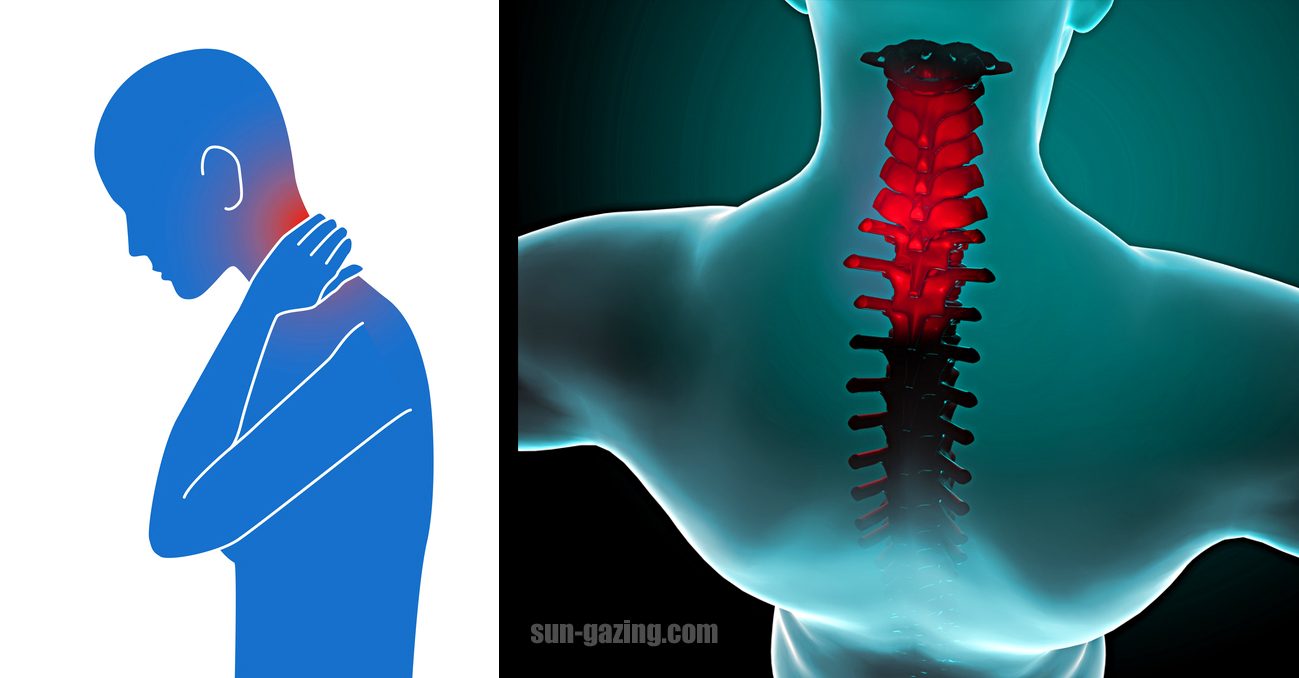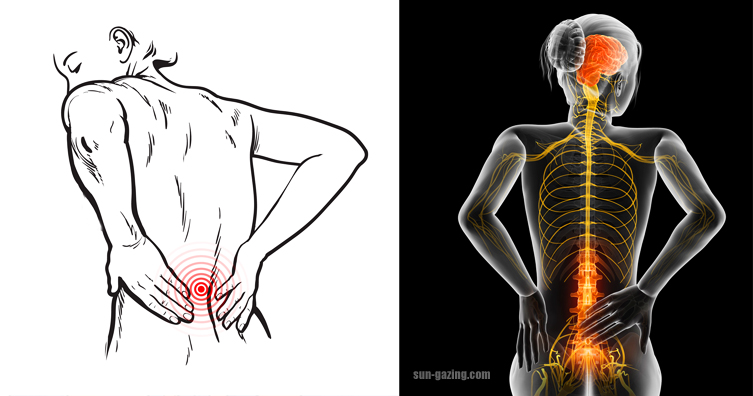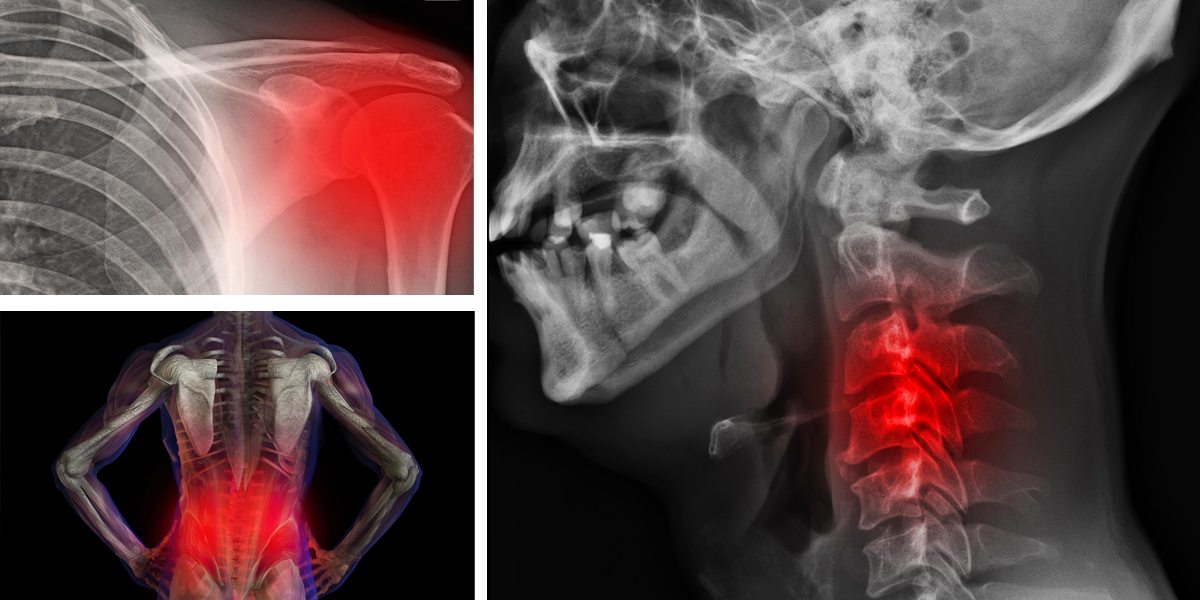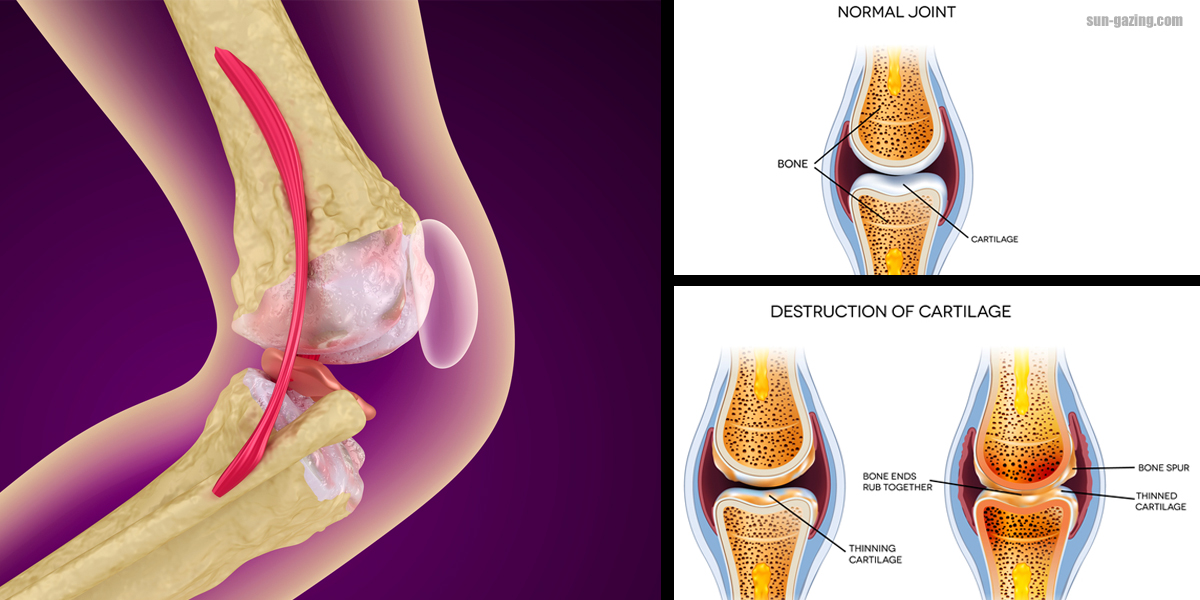If You Have Bad Knee Pain THIS Simple Trick Will Give You Instant Relief!
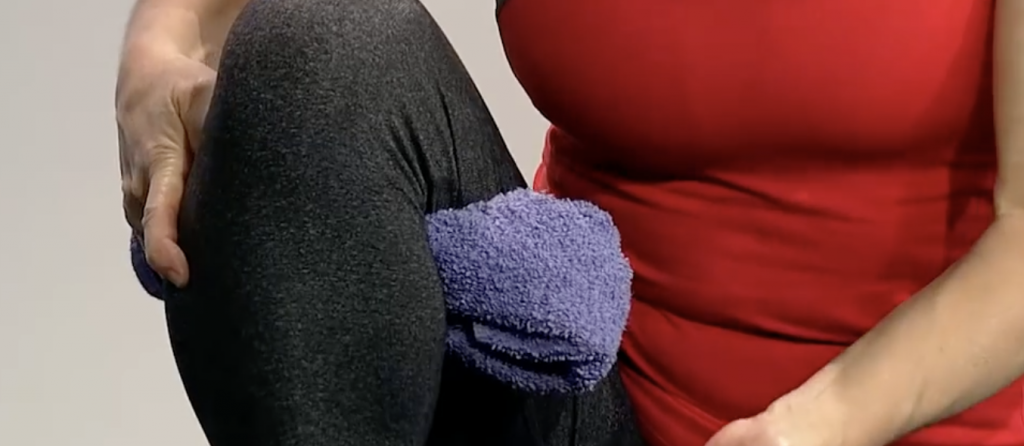
If you or anyone you know suffers from knee pain, the video you are about to watch below is an answer to your prayers! Chronic knee pain due to arthritis is very common; in fact by the age of 85, 50% of all American will experience the pain of arthritis in the knees, according to the Center for Disease Control.
Arthritis can occur well before the age of 85. The pain experienced is due to a loss of space between your bones that cartilage provides. It’s actually become a rule of thumb, that it is best to stop running after the age of 40, as this can cause premature stress and aging of the knees.
If you are beginning to suffer from knee pain, or have felt the debilitating effects of arthritis in your knees for some time, you will find this amazingly simple stretching technique in the following video extremely helpful. It is also a great stretch as a preventative for knee pain, as it provides a way to create space between the bones in this joint, that is necessary for healthy and pain-free mobility.
Please SHARE this helpful video with your family and friends; everyone can benefit!
5 Signs and Symptoms You Have Fibromyalgia and May Not Even Know It.
Fibromyalgia is a chronic medical condition that causes widespread bodily pain, muscle aches, and fatigue. It’s a terrible disorder to have and it can wreak havoc on the lives of people who suffer from it, wearing them down and tiring them out. It’s also a lot more common than many people assume it to be. According to scientists at the National Institutes of Health, fibromyalgia is estimated to affect around five million American adults and most of them, between 80-90%, are women.
One of the main issues with fibromyalgia is how tricky it can be to properly diagnose. The pain and symptoms typically associated with the disorder often make diagnosis difficult because they tend to overlap with other common medical conditions. Compounding the difficulty is the fact that there are currently no tests or scans that can definitively detect it, and so people need to keep close track of everything that’s going on with their bodies, and tell their doctor exactly what ills them.
While widespread physical pain is the main symptom of fibromyalgia, there are a number of other ones that people may experience and the following are the signs and symptoms associated with it that you should never ignore:
1. Pain- According to the Mayo Clinic, it’s believed that fibromyalgia affects the way the brain processes pain signals and this causes them to be magnified. While the pain is generally widespread all over the body, the most common areas where it’s felt is the back, neck, abdomen, and in muscles. People report feeling a range of pain types, from sharp and severe pain that’s long lasting, to a milder yet constant dull ache that lasts for at least 3 months or longer. In addition, the pain is oftentimes felt more at night and over the counter medicines do not alleviate it.
2. Tiredness and Fatigue- Pain is one reason why those with fibromyalgia have difficulty sleeping and when they do fall asleep the quality is poor so they don’t feel as rested as they otherwise should. A common complaint is that no matter how much sleep they get, they wake up feeling tired and worn out.
3. Lack of Mental Focus- Another common symptom is what’s known as “fibro fog” and it’s when a person’s cognitive abilities, such as concentration, paying attention, focusing, and remembering things, are negatively impaired. This results in confusion and a lack of mental clarity which can be extremely frustrating and disconcerting.
4. Sensory Issues- Many people report feeling extra sensitive to temperature changes and their bodies are seemingly unable to regulate it properly. Some may feel super hot or freezing cold even if the temperature changes only just slightly. Another sensory related symptom is paraesthesia, the feeling of pins and needles in hands, feet, arms, and legs. The tingly discomfort can last anywhere from a minute or two to well over an hour or more and some people also experience numbness as well.
5. Gastrointestinal Issues- Having abnormal and excessive gas, constipation, diarrhea, bloating, and nausea are all common symptoms and should be monitored closely. Also, fibromyalgia is often found in patients who suffer from Irritable Bowel Syndrome, acid reflux disease, and those who have interstitial cystitis, which is a painful bladder condition.
Watch the video below to see some all natural ways to manage fibromyalgia
Please SHARE This With Family and Friends
If You Have Neck Pain Or a Stiff Neck This Simple Trick Will Give You Instant Relief In Only 90 Seconds
Pain is a part of everyone’s life, it’s our bodies way of letting us know that we are either hurt and something is wrong, or we are healing. Aches and stiffness are inescapable and while most of the time it’s not too serious, there are some types of pain that can wreak havoc on both your mobility and your sanity!
Neck pain is that type of pain. Not only is it very common, it’s also on the rise. Lots of people develop severe neck pain overnight by sleeping in an odd position. If you’ve ever experienced this before then you know exactly how achy and terrible it feels upon waking. You can barely turn your neck to the side, instead you have to turn your whole upper body. The resulting limited mobility makes everything from driving and switching lanes safely to greeting people ten times more difficult, all because you unwittingly slept wrong.
Another huge reason why so many of us have neck pain is our use of technology. Between the ever expanding use of cell phones and computers at work and home, we’re constantly staring down at our devices and looking at screens. On average, a person spends around 2-4 hours a day crooked over looking down at their personal devices. Young adults spend much more time than that, often logging hours at a time in just one sitting.
As for neck pain, the root cause of it often comes down to a shortening of the muscle. This usually happens when we’re completely oblivious and unaware of the fact that we have twisted our neck in an unnatural way. The resulting strain ends up shortening the neck muscle and when this occurs it bothers the nerve, aggravating it greatly, which in turn causes us pain. That’s what makes moving our necks difficult, especially turning to the side.
Whether your neck pain stems from craning it at a screen or sleeping oddly, there are some things you can do to alleviate the soreness and aching. In the accompanying video Dr. Mandell shows you exactly how to target, stretch, and massage away built up tension in the neck. The technique he uses is called cross fiber massage and if you watch his demonstration and listen as he explains what to do, then you can try it on yourself. It’s super easy and informative, so if you ever find yourself suffering from a stiff neck, the 90 second trick shown here can help bring you instant relief.
For anyone reading this and others who may be concerned about neck pain stemming from cell and laptop use, there are some additional things that can be incorporated into your everyday routine to help you avoid it. First, it’s always important to sit up straight. This means stop looking down at phones and devices! Instead, you want to hold your phone up higher so that it’s right in front of your face and level with your eyes. There’s an app available that helps people remember to elevate their phones, it simply blinks a red light which warns you to raise your phone higher. Also, aim to stand up more often throughout the day. Get in a good stretch every hour, roll your shoulders, take a walk, and move around. Simply being conscious and aware of the things you are doing, and not doing, and for how long can help you avoid neck strain and pain and all of the uncomfortable aches and issues that accompanies it.
Please SHARE This Simple Trick With Family and Friends 🙂
5 All Natural Ways To Get Rid Of Your Sciatica and Lower Back Pain Without Surgery Or Pain Pills
Sciatica is a painful and debilitating nerve condition that can flare up at any moment. If you’ve ever had to suffer through episodes of it, you know how absolutely miserable the severe nerve pain can truly be. Everyday activities can become extremely hard and painful to do, and after experiencing it for awhile your quality of life quickly begins to suffer and diminish. It ends up affecting not only your body, but also your mind and spirit.
While there are several causes and variations of sciatica, the medical condition is commonly known as general back pain which originates in the lower spine or buttocks area. This pain then radiates outwards, traveling through the lower body area and down either one or both legs. Sciatica got its name because it stems directly from the pinching, pressure, and irritation of the nerves which link the spinal cord to the sciatic nerves. Whenever this area becomes aggravated or inflamed the intense, shooting pain that’s associated with sciatica is what results from it.
For many people the pain is moderate to severe, but for some it’s excruciating, to the point that it becomes intolerable. Common reactions and movements including sneezing, coughing, getting up, sitting down, rolling over in bed, and simply walking, are no longer simple to do. They result in additional pressure and strain on the lower back area which then stresses the nerves and causes that radiating pain to flare up. Many report that one of the worst parts about it is how unpredictable and out of the blue the onset of the pain can be, it’s almost like a knee-jerk reaction.
There are a number of ways to treat sciatica that range from medications to lifestyle adjustments, but the focus here is on the best all-natural ways to reduce and manage sciatic pain. One thing that helps is staying active and maintaining a strong core, which helps to prevent future episodes. Also, getting plenty of sleep helps greatly because it gives your body a chance to rebuild, rest, and heal. Other than these simple things mentioned here, you can also try out the following five ways to reduce sciatic nerve pain:
1. YOGA- Yoga is among the most gentle and effective ways to condition your body and get into overall shape. For sciatica pain doctors and physical therapists often advise their patients to do certain exercises which target the affected area and many people have found relief this way. At the same time however, activities that place a lot of stress on the lower back should be limited and avoided as much as possible, especially bending or folding forward.
At the very least, it’s highly recommended that you start stretching. The accompanying video shows you how to do a one minute stretch routine that helps relieve sciatica pain and speed up healing. It can be done in your spare time, whenever and wherever, and the comments under the video show how it has helped tons of people get back to feeling normal and healthy again. Hopefully it will work for you as well if you suffer from sciatica!
2. MASSAGE- When your back hurts due to sciatic nerve pain it causes your muscles to tense and tighten up. This often exacerbates the pain and inflammation further, which is why a nice, relaxing, deep massage can help to relieve your aching body. Besides loosening your muscles up, a massage also leads to the release of endorphins which make you feel better and help to fight the pain.
3. HOT & COLD COMPRESS- Alternating between hot and cold treatments for sciatica can greatly relieve the pain. Placing an ice pack on the area helps to reduce inflammation, while a heating pad or warm bath works to stimulate and increase blood flow.
4. STAND UP- For the majority of people, spending a lot of time sitting down is normal. We sit while we’re waiting, when we’re traveling or going places, and when we get to where we are going, we sit down again! Not to mention working at a desk and sitting for long stretches of time at work. All that sitting can aggravate an already inflamed lower back even more and make it feel stiff as heck.
You need to get up more often and get moving! This will get your blood flowing again and keep your back from becoming tight and stiff. If you can, work while standing up and look into getting a standing desk. At the very least, get up and move around every once in awhile to avoid sitting for prolonged periods of time.
5. ACCUPUNCTURE- This is a wonderful alternative type of treatment that has worked for many sciatic nerve pain sufferers. Acupuncture may not be for everyone, especially those who hate needles, but it’s known to be effective at targeting and eliminating inflammation which is the root cause of sciatica. Out of all the issues acupuncture is used to treat, sciatica is the the top-most complained of disorder.
Please SHARE This With Family and Friends
7 Kinds Of Chronic Body Pains Which Could Be Caused By Your Psychological/Emotional States
Pain is our bodies way of letting us know that we are either hurting or healing. It’s a part of life that everyone has to experience at some point in time. We’ve all had cuts, bumps, and bruises from banging into stuff or falling down, not to mention the occasional aches and stiffness that come from overdoing things. However, there are some types of bodily pain that are not caused by direct physical trauma, rather they stem from our emotional states. They can persist and affect the quality of our life, and just like any other pain, they should not be ignored. Below are the seven main types of bodily pain that are directly linked to our human emotions:
1. Upper Back Pain. Back pain is one of the most common types of pain reported by people across the world. In some cases pain in the upper back area stems from loneliness, confusion, and feelings of being undesired or not loved. In a sense, you may need a stronger emotional backbone. You can find the support you need by turning to friends, family, and other loved ones to help you cheer up and get more social.
2. Lower Back Pain. When you are stressed out about financial issues, it can manifest as pain in your lower back area. Instead of ignoring it or letting money problems drag on, do something towards getting your finances in order. Balance your accounts, make a budget and stick with it, set an appointment with a money manager, see a financial adviser, ask for a raise or promotion, and just go for it!
3. Head Pain. When you’re feeling overwhelmed and stressed out to the max it can take a toll on your health. Oftentimes headaches, migraines, mental strain, and other types of pain in your head area stem from all that built up tension and stress. To help alleviate it, give yourself a break and step back from all the worries. Set aside a moment for yourself to decompress and relax.
4. Elbow Pain. Didn’t bump your elbow, yet it hurts just as bad as if you did? It could be from you being resistant to any recent changes that have taken place in your life. When you rigidly stick with how things once were, you’re more likely to experience stiff arms and elbow joints. Instead of being so anti-change, embrace the shift, you’ll feel a lot better from it!
5. Hip Pain. Just as elbow pain signifies you’re resistant to changes, hip pain means you’re scared of moving on and what may come of the future. You need to throw caution to the wind and go with the flow. Change is inevitable so why not take control of your life. Get up and get moving!
6. Neck Pain. If you’re the type of person who holds onto grudges and harbors animosity towards both the ones you love and even yourself, then you may often find yourself with a stiff, painful feeling in your neck. When you focus on all the things you like and enjoy about them instead, and work towards forgiveness, then you can move on and your neck pain will subside.
7. Shoulder Pain. Ever feel like the weight of the world is riding on your shoulders? That heavy, tiresome load is the emotional burden you’ve taken on and are now lugging around with you everywhere you go. It’s a nagging type of pain that’s hard to ignore, but for it to go away you’ll need to do something that takes your mind off your problems and worries. In addition, we often take on other people’s problems on top of our own, when you stop doing that it’s like some of the weight has been lifted off your shoulders.
Please SHARE This With Family and Friends
How You Can Strengthen Damaged Knee Joints and Heal The Pain In Your Knees Naturally, Without Surgery or Pills
I don’t know about you, but my knees always hurt when I’m going up a flight of stairs. I was a runner for many years, and although it kept me in shape, the wear and tear on my knees as well as aging, has weakened them.
Whether your knees currently hurt or not, the following video is for you; eventually everyone experiences knee pain, and the more we strengthen them the better. Dr. Jo, a physical therapist and Doctor of Physical Therapy presents 3 excellent solutions for strengthening your knees.
The key to KNEE STRENGTHENING is to REBUILD JOINT STRENGTH. This will not only REDUCE PAIN (if you already have it), but will act as a PREVENTATIVE for knee joint erosion as you age. Dr. Jo emphasizes the importance of maintaining correct form when doing the following 3 KNEE STRENGTHENING EXERCISES:
1. STEP UPS
For this move you can actually use a step in your house, or a couple of hard covered books if your step is too high. As you will see, it is important to move slowly (using your muscles not momentum) to go up and down. It is also important to always keep your bent knee behind your toes.
2. LUNGES
Again, keeping your knee behind your toes, you alternate lunges with each leg, keeping your upper body straight and maintaining a controlled motion.
3. SQUATS
While keeping your legs shoulder width apart, you lower your rear as if you are going to sit, using a low chair or coffee table as the object to tap so you don’t go down too far. It is key that you not go fully down into a sitting position, and once again keep your knees behind those toes!
Dr. Jo further emphasizes the importance of mobilizing and stretching the knee, before strengthening it. She focusses on correct form so that the knee actually gets strengthened; following the moves you are about to view accurately is key to not moving in ways that could do further damage to the joint. Doing these 3 exercises daily will go a long way in strengthening your knees and getting pain relief!
Please SHARE this important HEALTH INFORMATION with your family and friends

